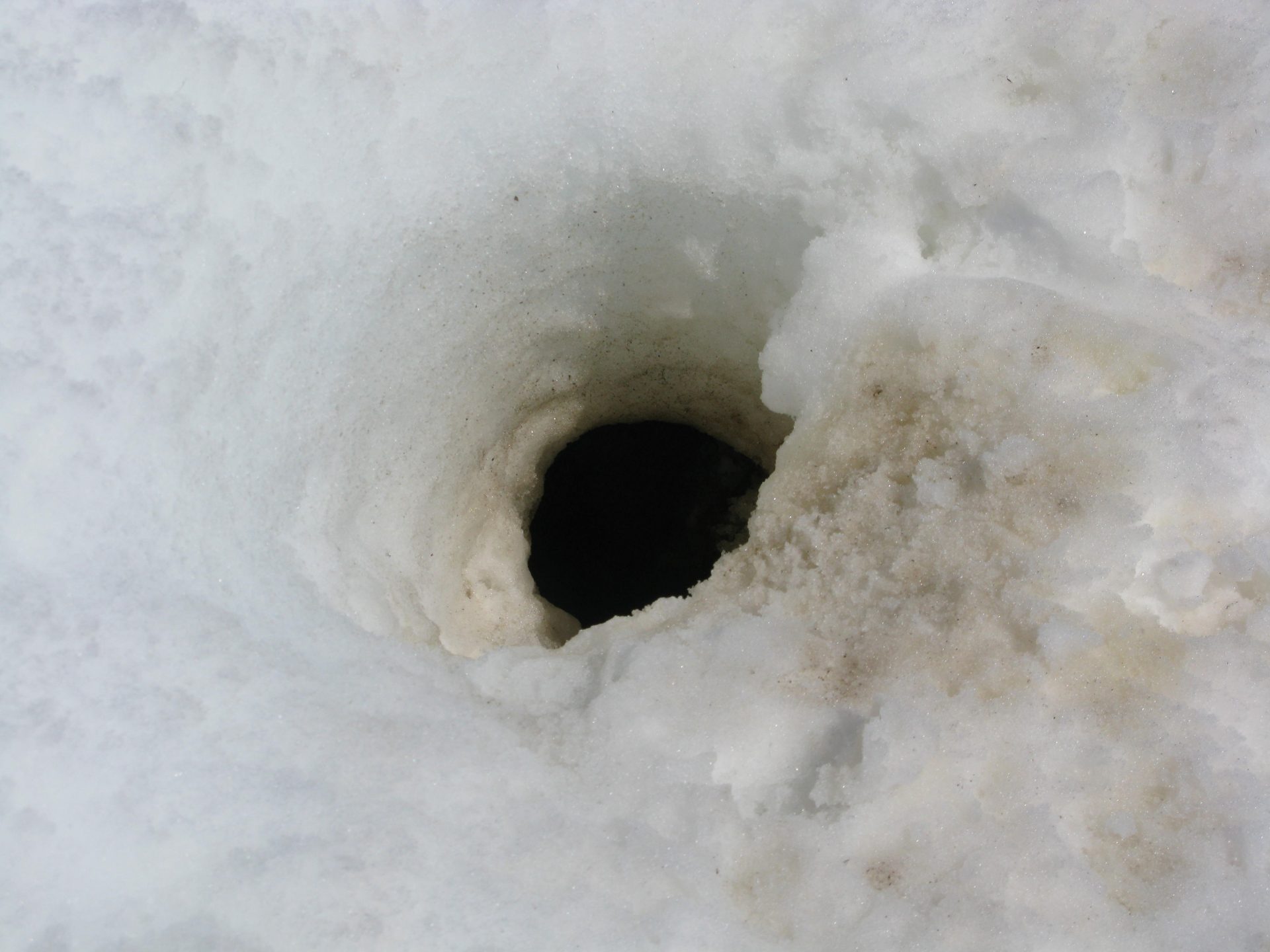Remember Snow?
Each spring, field crew visit Vancouver Island marmot colonies to determine which marmots survived the winter. As part of this task, they also scour the mountain tops to locate the special burrows that marmots hibernate in (called a “hibernaculum”). Usually, this is a fairly easy task. You see, marmots hibernate underground, and so their feet, nose and tummy get covered in soil. In spring, when marmots leave their hibernacula and dig up through several feet of snow to the surface, marmots create a dirty-looking tunnel in the snow that we call an “emergence hole”.
But there’s something missing this spring that we usually see in other years, particularly in the Nanaimo Lakes region. We’ll give you a hint it’s fluffy, white, and a great insulator for hibernating marmots…that’s right, we’re talking about snow! This past winter, there was very little snow at the Nanaimo Lakes marmot colonies. This means that these marmots didn’t even have to dig emergence holes this spring – they just stepped out of their burrows! So in order to show you what an emergence hole looks like, we took a photo at one of the fledgling colonies in Strathcona Provincial Park, where marmots woke up this spring with at least a little bit of snow to dig through.
